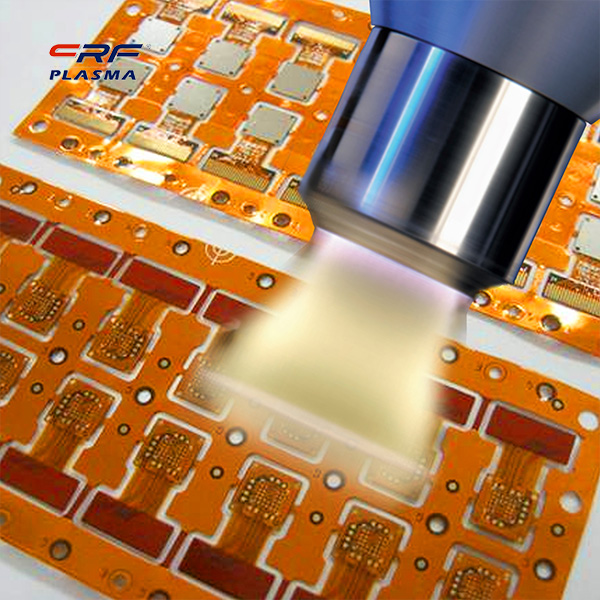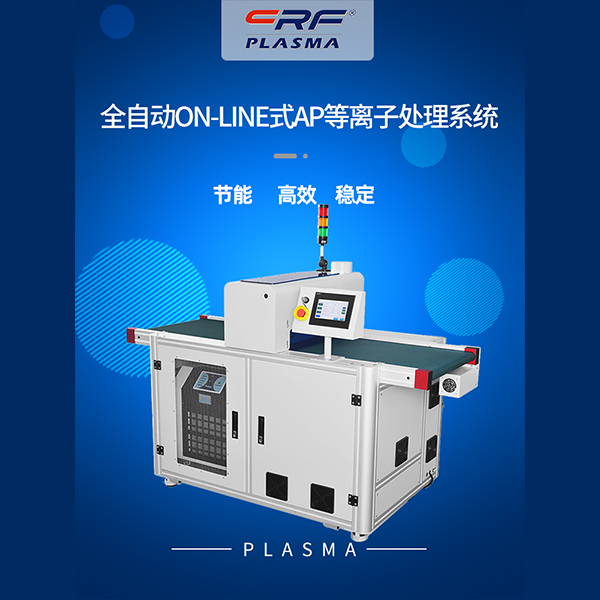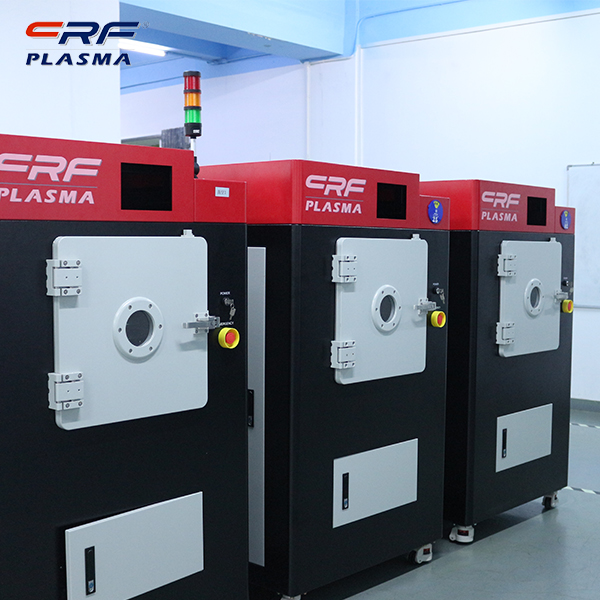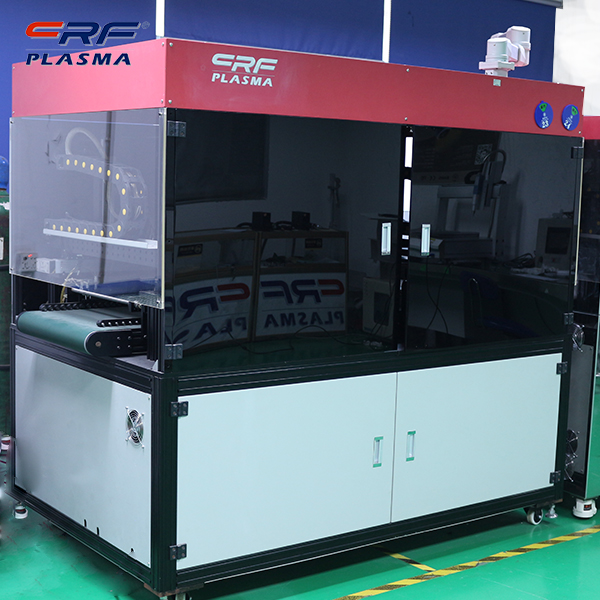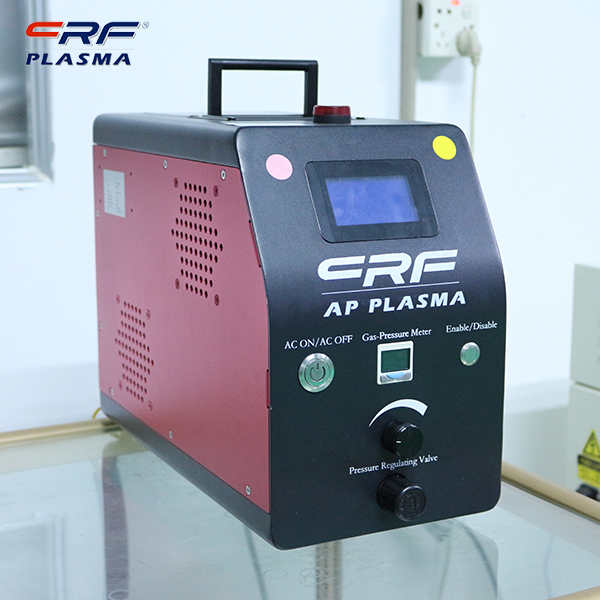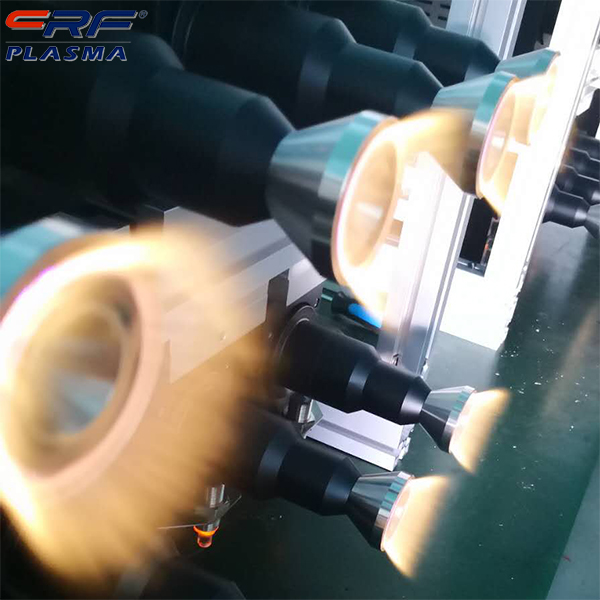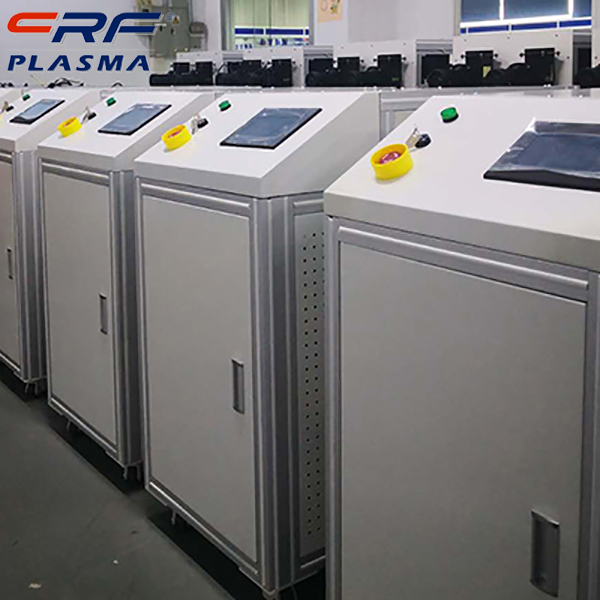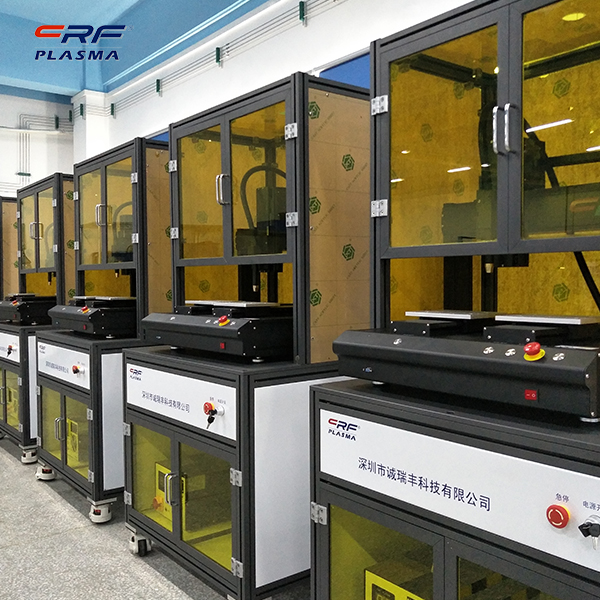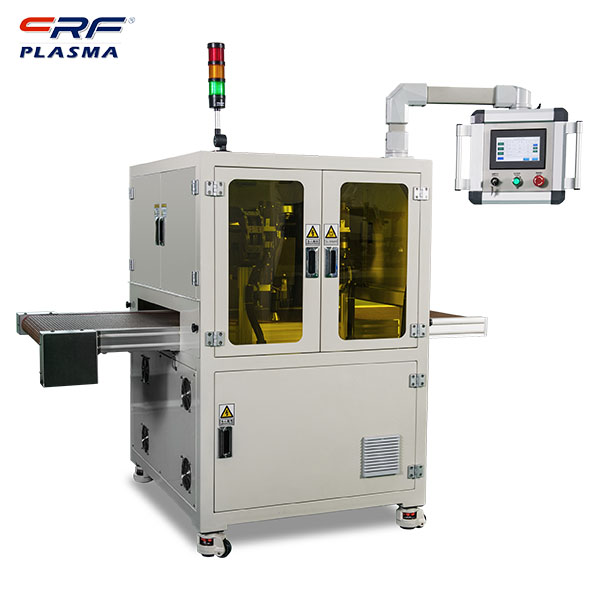
Welcome to Shenzhen Sing Fung Intelligent Manufacturing Co., Ltd.
E-mail:shaobo@sfi-crf.com
Study on the modification of wood by plasma treatment of plasma plasma cleaner
- Categories:Industry News
- Author:Plasma cleaning machine-CRF plasma plasma equipment-plasma surface treatment machine manufacturer-chengfeng intelligent manufacturing
- Origin:
- Time of issue:2021-12-23
- Views:
(Summary description)Study on the modification of wood by plasma treatment of plasma plasma cleaner: As a material that has been used by humans for a long time, wood materials have many advantages such as easy to obtain materials, recyclable and environmentally friendly, high strength-to-weight ratio, convenient processing, and wide application. So far, they still play a great role. However, with the improvement of people's living standards and years of logging and utilization, logs with excellent wood properties are becoming scarce. In addition, the material properties of wood have given way to ecological properties. Traditional wood must be functional, intelligent, and fusion modified to meet the requirements of the new era. The use of artificial fast-growing forests to finely process wood has become a trend in the wood industry. In this context, research on wood modification has become an inevitable hot spot. However, chemical modification methods such as wood acetylation and wood-plastic composite materials have complex processes and a single applicable material category, and chemicals will generate environmental pressure, which limits the use of chemical modification methods. Physical modification methods such as mechanical sanding and thermal modification have a weaker degree of wood modification, and there is no qualitative change in wood properties. Therefore, plasma technology has entered people's field of vision. Plasma is generally a gas mixture composed of ground state and excited state electrons, ions and neutral particles. Wood is mainly modified by cold plasma. The modification of wood by plasma treatment is only limited to the surface of the material, without changing the nature of the wood itself, and to a large extent retains the advantages of the wood itself. This method has the advantages of short processing time, simple process, high efficiency, non-polluting, dry method, and wide application range. It is a research field that integrates physics, chemistry, materials science and many other disciplines with development potential. The effect of plasma modified wood is mainly reflected in three aspects: wetting characteristics, liquid transport characteristics and adhesion characteristics. The wettability of wood is directly related to its glue and characteristics, as well as its ability to prevent moisture and mildew. It is an intuitive feature of wood surface modification. Plasma treatment of wood can not only improve wettability, but also reduce wettability. The hydrophobic and hydrophilic surface produced depends on the gas used in the plasma treatment process. The use of methane, tetrafluoroethylene, etc. as the treatment gas increases the contact angle of the wood surface and forms a hydrophobic surface; while using oxygen and acrylic acid as the treatment gas, the wood is changed from a hydrophobic surface to a hydrophilic surface, but the nature of the wood itself is not Variety. After the plasma treatment, the depth of the wood adhesive to reach the surface of the wood body after penetration by transportation is increased. Plasma plasma cleaning machine plasma treatment of wood has other modification effects. Plasma is used to eliminate the weak boundary layer, homogenize the wood surface and increase wettability. Compared with laser ablation, the effect of plasma modification is better. Plasma polymerization coating technology plasmaizes polymerized organic gases through electrical effects, and these active particles undergo an addition reaction to form a polymerized film on the surface of the wood, thereby achieving functional characteristics such as moisture resistance, fire resistance, and mildew resistance. Plasma bombards the wood surface, causing etching, forming microscopic "gullies", increasing the roughness of the wood surface, creating a liquid transport channel, improving the wettability and permeability of the liquid, and forming a glue nail effect during gluing. Improve gluing performance. Plasma plasma cleaning machine plasma can promote graft copolymerization on the surface of wood, improve surface activity, and create conditions for subsequent chemical reactions. The performance is that ionic treatment can affect the acidity and alkalinity of the surface of the carrier, so that the surface layer can form a new metastable phase. .
Study on the modification of wood by plasma treatment of plasma plasma cleaner
(Summary description)Study on the modification of wood by plasma treatment of plasma plasma cleaner:
As a material that has been used by humans for a long time, wood materials have many advantages such as easy to obtain materials, recyclable and environmentally friendly, high strength-to-weight ratio, convenient processing, and wide application. So far, they still play a great role. However, with the improvement of people's living standards and years of logging and utilization, logs with excellent wood properties are becoming scarce. In addition, the material properties of wood have given way to ecological properties. Traditional wood must be functional, intelligent, and fusion modified to meet the requirements of the new era.
The use of artificial fast-growing forests to finely process wood has become a trend in the wood industry. In this context, research on wood modification has become an inevitable hot spot. However, chemical modification methods such as wood acetylation and wood-plastic composite materials have complex processes and a single applicable material category, and chemicals will generate environmental pressure, which limits the use of chemical modification methods.
Physical modification methods such as mechanical sanding and thermal modification have a weaker degree of wood modification, and there is no qualitative change in wood properties. Therefore, plasma technology has entered people's field of vision. Plasma is generally a gas mixture composed of ground state and excited state electrons, ions and neutral particles. Wood is mainly modified by cold plasma. The modification of wood by plasma treatment is only limited to the surface of the material, without changing the nature of the wood itself, and to a large extent retains the advantages of the wood itself.
This method has the advantages of short processing time, simple process, high efficiency, non-polluting, dry method, and wide application range. It is a research field that integrates physics, chemistry, materials science and many other disciplines with development potential. The effect of plasma modified wood is mainly reflected in three aspects: wetting characteristics, liquid transport characteristics and adhesion characteristics. The wettability of wood is directly related to its glue and characteristics, as well as its ability to prevent moisture and mildew. It is an intuitive feature of wood surface modification.
Plasma treatment of wood can not only improve wettability, but also reduce wettability. The hydrophobic and hydrophilic surface produced depends on the gas used in the plasma treatment process. The use of methane, tetrafluoroethylene, etc. as the treatment gas increases the contact angle of the wood surface and forms a hydrophobic surface; while using oxygen and acrylic acid as the treatment gas, the wood is changed from a hydrophobic surface to a hydrophilic surface, but the nature of the wood itself is not Variety.
After the plasma treatment, the depth of the wood adhesive to reach the surface of the wood body after penetration by transportation is increased. Plasma plasma cleaning machine plasma treatment of wood has other modification effects. Plasma is used to eliminate the weak boundary layer, homogenize the wood surface and increase wettability. Compared with laser ablation, the effect of plasma modification is better.
Plasma polymerization coating technology plasmaizes polymerized organic gases through electrical effects, and these active particles undergo an addition reaction to form a polymerized film on the surface of the wood, thereby achieving functional characteristics such as moisture resistance, fire resistance, and mildew resistance.
Plasma bombards the wood surface, causing etching, forming microscopic "gullies", increasing the roughness of the wood surface, creating a liquid transport channel, improving the wettability and permeability of the liquid, and forming a glue nail effect during gluing. Improve gluing performance.
Plasma plasma cleaning machine plasma can promote graft copolymerization on the surface of wood, improve surface activity, and create conditions for subsequent chemical reactions. The performance is that ionic treatment can affect the acidity and alkalinity of the surface of the carrier, so that the surface layer can form a new metastable phase. .
- Categories:Industry News
- Author:Plasma cleaning machine-CRF plasma plasma equipment-plasma surface treatment machine manufacturer-chengfeng intelligent manufacturing
- Origin:
- Time of issue:2021-12-23 17:14
- Views:
Study on the modification of wood by plasma treatment of plasma plasma cleaner:
As a material that has been used by humans for a long time, wood materials have many advantages such as easy to obtain materials, recyclable and environmentally friendly, high strength-to-weight ratio, convenient processing, and wide application. So far, they still play a great role. However, with the improvement of people's living standards and years of logging and utilization, logs with excellent wood properties are becoming scarce. In addition, the material properties of wood have given way to ecological properties. Traditional wood must be functional, intelligent, and fusion modified to meet the requirements of the new era.
The use of artificial fast-growing forests to finely process wood has become a trend in the wood industry. In this context, research on wood modification has become an inevitable hot spot. However, chemical modification methods such as wood acetylation and wood-plastic composite materials have complex processes and a single applicable material category, and chemicals will generate environmental pressure, which limits the use of chemical modification methods.
Physical modification methods such as mechanical sanding and thermal modification have a weaker degree of wood modification, and there is no qualitative change in wood properties. Therefore, plasma technology has entered people's field of vision. Plasma is generally a gas mixture composed of ground state and excited state electrons, ions and neutral particles. Wood is mainly modified by cold plasma. The modification of wood by plasma treatment is only limited to the surface of the material, without changing the nature of the wood itself, and to a large extent retains the advantages of the wood itself.
This method has the advantages of short processing time, simple process, high efficiency, non-polluting, dry method, and wide application range. It is a research field that integrates physics, chemistry, materials science and many other disciplines with development potential. The effect of plasma modified wood is mainly reflected in three aspects: wetting characteristics, liquid transport characteristics and adhesion characteristics. The wettability of wood is directly related to its glue and characteristics, as well as its ability to prevent moisture and mildew. It is an intuitive feature of wood surface modification.
Plasma treatment of wood can not only improve wettability, but also reduce wettability. The hydrophobic and hydrophilic surface produced depends on the gas used in the plasma treatment process. The use of methane, tetrafluoroethylene, etc. as the treatment gas increases the contact angle of the wood surface and forms a hydrophobic surface; while using oxygen and acrylic acid as the treatment gas, the wood is changed from a hydrophobic surface to a hydrophilic surface, but the nature of the wood itself is not Variety.
After the plasma treatment, the depth of the wood adhesive to reach the surface of the wood body after penetration by transportation is increased. Plasma plasma cleaning machine plasma treatment of wood has other modification effects. Plasma is used to eliminate the weak boundary layer, homogenize the wood surface and increase wettability. Compared with laser ablation, the effect of plasma modification is better.
Plasma polymerization coating technology plasmaizes polymerized organic gases through electrical effects, and these active particles undergo an addition reaction to form a polymerized film on the surface of the wood, thereby achieving functional characteristics such as moisture resistance, fire resistance, and mildew resistance.
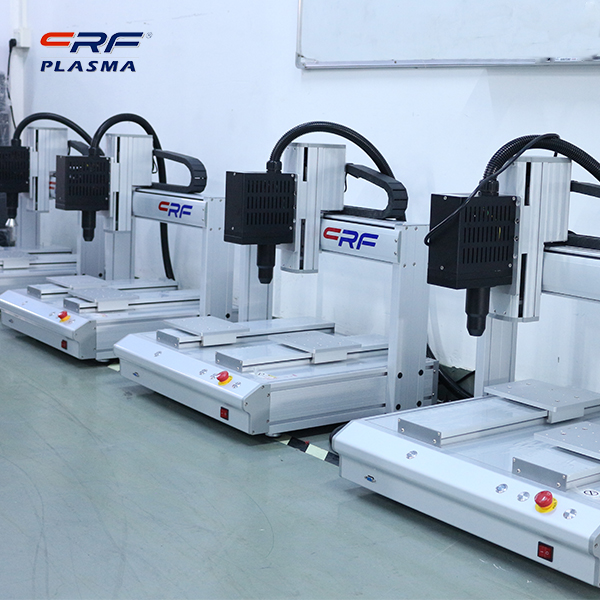 Plasma bombards the wood surface, causing etching, forming microscopic "gullies", increasing the roughness of the wood surface, creating a liquid transport channel, improving the wettability and permeability of the liquid, and forming a glue nail effect during gluing. Improve gluing performance.
Plasma bombards the wood surface, causing etching, forming microscopic "gullies", increasing the roughness of the wood surface, creating a liquid transport channel, improving the wettability and permeability of the liquid, and forming a glue nail effect during gluing. Improve gluing performance.
Plasma plasma cleaning machine plasma can promote graft copolymerization on the surface of wood, improve surface activity, and create conditions for subsequent chemical reactions. The performance is that ionic treatment can affect the acidity and alkalinity of the surface of the carrier, so that the surface layer can form a new metastable phase. .
Scan the QR code to read on your phone

TEL:0755-3367 3020 / 0755-3367 3019

E-mail:sales-sfi@sfi-crf.com

ADD:Mabao Industrial Zone, Huangpu, Baoan District, Shenzhen




